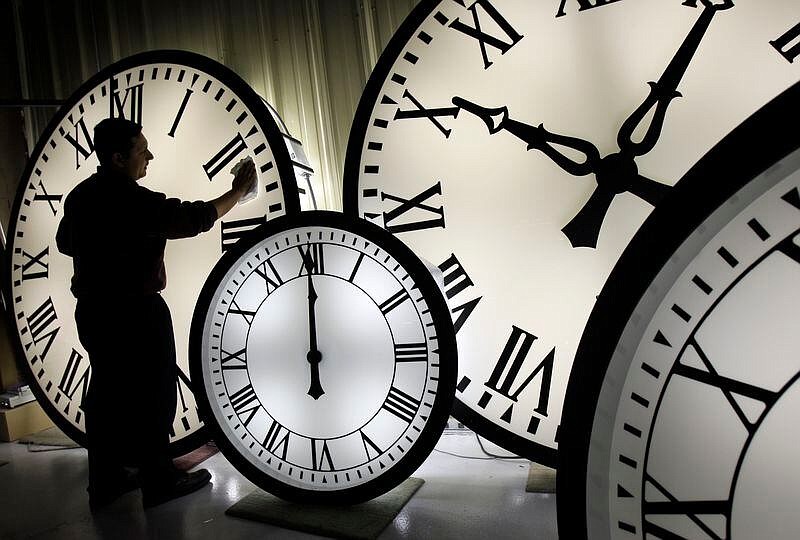Back in 1918, when the United States entered World War I, officials in Washington looked at what the Germans were doing to conserve energy.
One step was Daylight Saving Time, which had been in effect in Germany since 1916.
By 1918 the U.S. decided to give DST a try. And so on March 31 Americans set their clocks forward an hour for the first time.
Most people hated it. So much so Congress repealed DST after the war.
But not everyone saw DST as a negative. Some states continued to use DST to take advantage of long summer days, while others just didn't want to be bothered.
Then came World War II. President Franklin Roosevelt, eager both to save energy and boost essential production, instituted "war time" -- essentially year-round DST. War time began in February of 1942 and continued until September of 1945.
For the next 21 years the federal government left DST up to the states. Some used it, some didn't. And they each set their own days for time changes. The result was something of a nationwide mess -- especially for the transportation industry. Long-haul truckers in particular found it difficult to keep up with what each state was doing.
So in 1967 Congress standardized DST across the U.S.
Initially, Arizona, Hawaii and Michigan opted out of DST. Michigan returned to the fold in 1973, but Arizona apparently feels it has more than enough sunshine and hasn't seen the need to save any daylight. Hawaii's tropical climate makes DST unnecessary..
The country went back on year-round DST from January of 1974 until March of 1975 in response to the Arab oil embargo. But it proved unpopular and the experiment was ended. Since then the dates have shifted from time to time, but for most Americans the ritual is "fall back" and "spring forward."
But why do we still do it? That's a question many Americans have asked over the years.
Supporters say it gives us more leisure time in the summer. They also more daylight hours helps business by keeping folks out shopping and such for longer house. And they argue it reduces energy expenses by requiring less lighting during evening hours.
Foes and there are quite a few -- say DST is an outmoded concept in today's world. Lighting is much more efficient than it once was. Retail businesses routinely stay open later hours and there is no proof added daylight helps profits. They also worry about the effect of time change on sensitive technology. Plus, they say it's just plain inconvenient.
What to do? Several states have tried passing legislation to abandon DST completely. No dice.
On the other hand, in 2022 the U.S. Senate passed a bill to make DST permanent year-round. But the House of representatives didn't go along.
These days, Daylight Savings Time is something we do for no particular reason, simply because we have done it for a long time.
So don't forget to set your clocks forward an hour before going to bed tonight. And try to get a good night's sleep. That alarm will be going off an hour earlier Sunday moriing.

